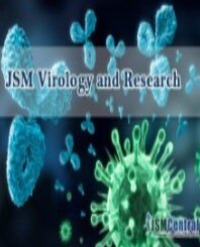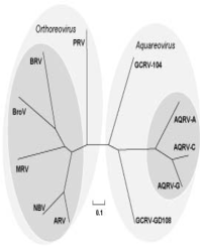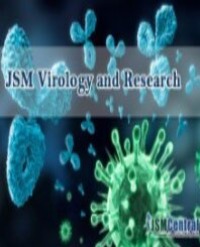During recent years phylogenetic analysis has become progressively popular as a tool for the criminal investigation of viral transmission, where it is used to derive the ancestral relationships of viral infections from sampled genome sequences. It has been used to cases involving the transmission of the fast-evolving human immunodeficiency virus (HIV) [1], Hepatitis B Virus (HBV) [2,3], hepatitis E (HEV) [4] and for tracking viral transmission in animal field. For example, for the first time phylogenetic analysis determined that the source of viral disease in aquaculture [5,6,7]. Aspects of the transmission of these viruses are impressed on the genetic variation of genomes [8]. These data revealed information about the patterns of virus emergence, viral epidemiology and evolutionary dynamics [9,8]. Analysis of molecular phylogenetic relationships must be based on a domain with a suitable level of evolution for the issue under investigation. Evaluation of recent transmission events requires the analysis of fast-evolving regions, whereas older events must be studied by sequencing more stable regions [2]. This analysis investigates small difference in virus genome using computational methods to calculate the variation between strains of viruses. This process is a critical complex scientific process which undertaken by virologist. The result of phylogenetic analysis has recently applied in illegal trials as evidence of responsibility for virus transmission [10]. In these events, the expert analysis of virologist has been discovered to be of critical importance. In the other hand, these trials can be applied to acquit individuals and keep out the possibility that defendant was responsible for virus transmission [10,11,8]. It is important to note that molecular analysis cannot prove the transmission virus between two individual, but it can support any information on the direction of that transmission [10,1]. It is necessary for molecular phylogenetic analysis to use the right comparison samples, because inappropriate samples could overstate the relationship between two viruses (of different geographical origin) as being conspicuously unique. In addition, many viruses frequently recombine and cause further opportunity for genetic novelty viral transmission from data commonly based on phylogenetic analysis [8]. Also, models of virus transmission and early diversification are the most important result of phylogenetic study. For example, Zika virus emerged in Africa and now circulates on all inhabited continents [12,13]. In another study demonstrated that isolated Dengue virus type 1 strain from Indonesia has a close phylogenetic relationship with strains of Japan [14]. In the recent decade, phylogenetic studies have matured with focus on the human RNA viruses such as influenza virus, HIV, dengue virus and HCV [8-10,15]. However, there are wide ranges of viruses to which phylogenetic analysis are used [9,16-18]. This review shortly outlines the importance of phylogenic analysis for viral transmission with focus on virus origin and shows phylogenetic approach to identify ecological and biological of virus transmission.





